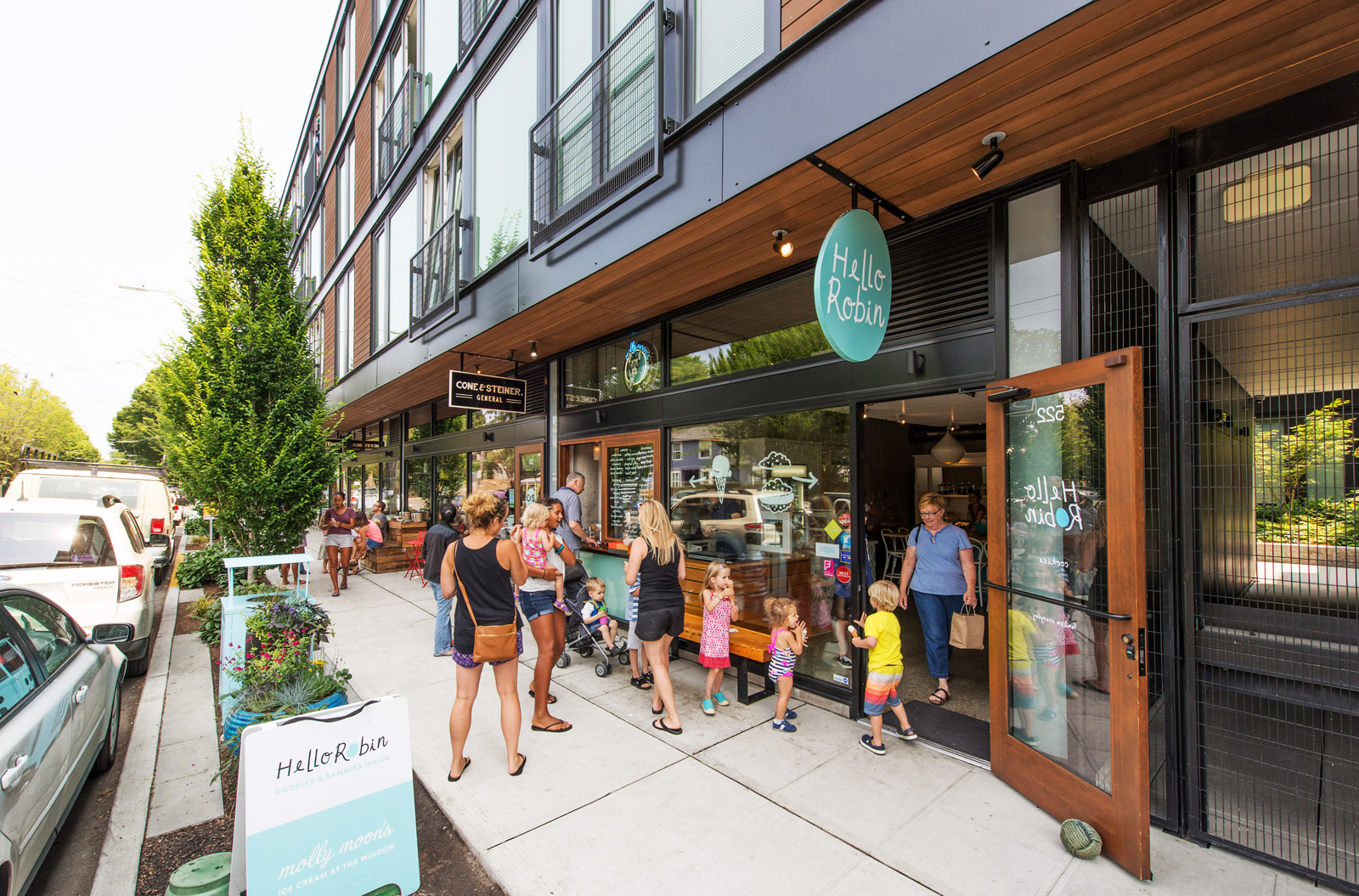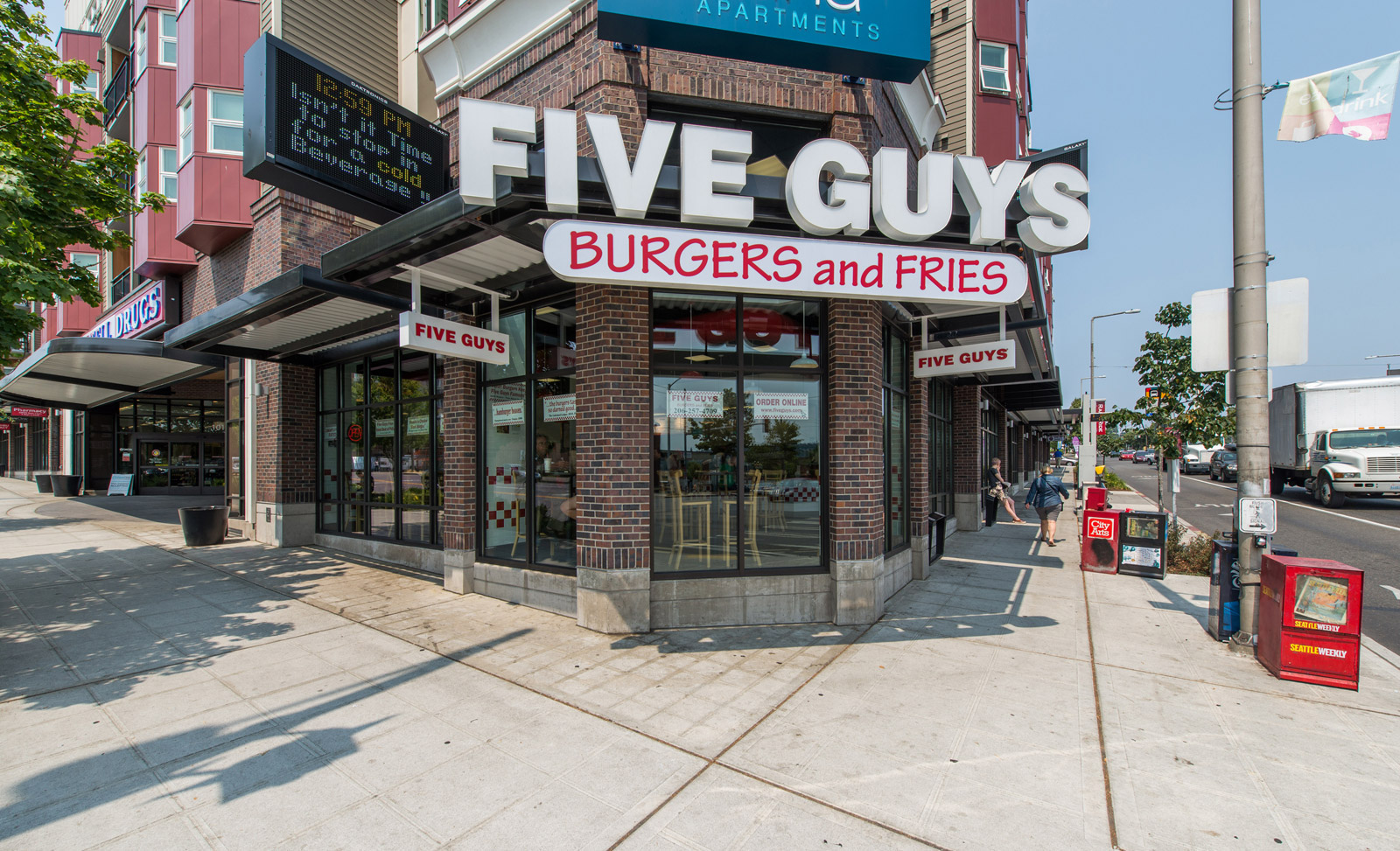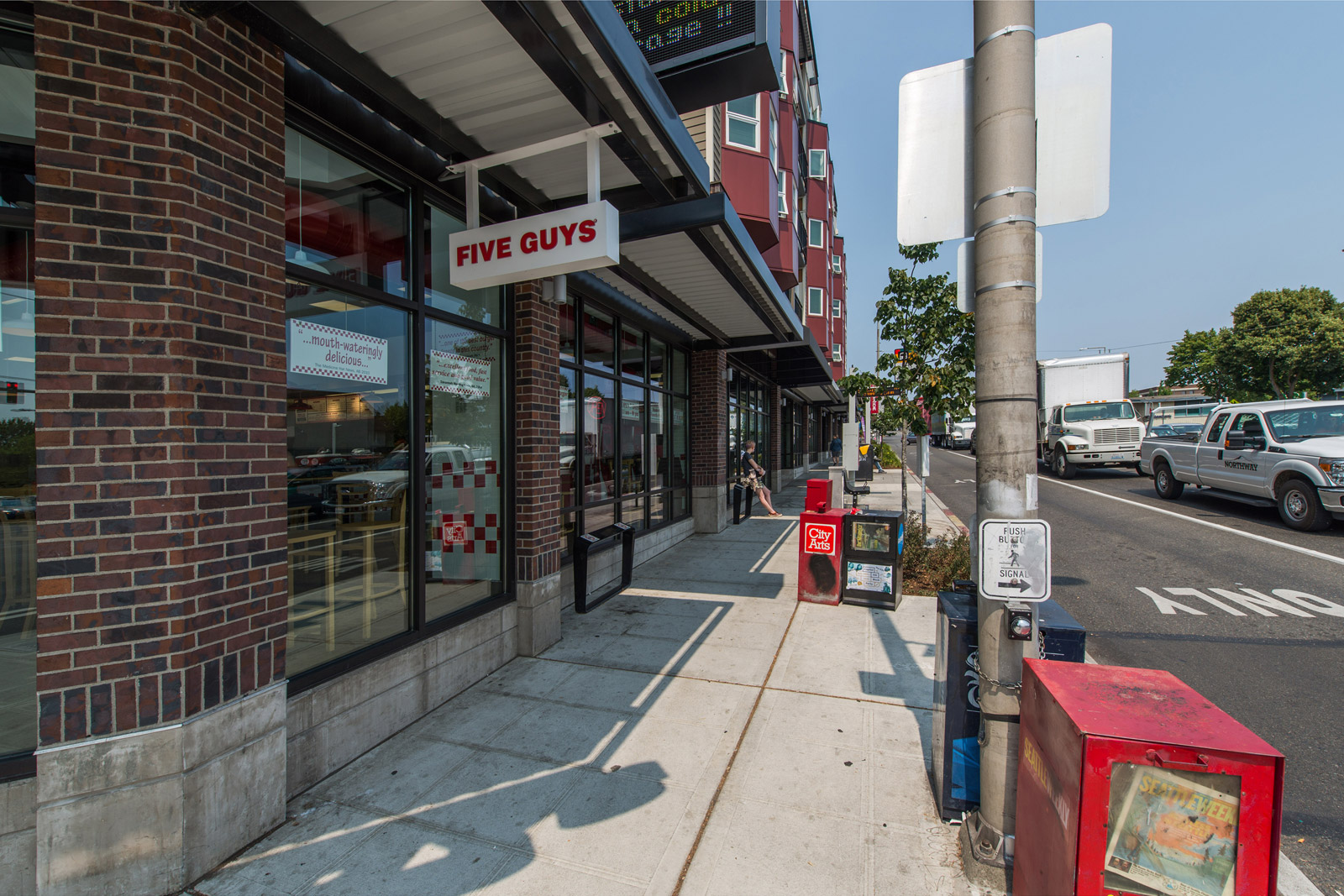
[All photos by BUILD LLC]
Many cities around the U.S. are experiencing the results of a significant shift in urban thinking right now. Either city blocks are activated, interesting, and inspiring, or they’re suffering a generic, cookie-cutter stagnation. While the evidence varies between one city and the next, you know a city block that fires on all cylinders when you see one. The sidewalks are lined with serendipitous shops, one-off restaurants, and unique watering holes. People from all walks of life populate the pedestrian zone, cars compete for valuable parking spaces, and bicycles dodge and weave amongst it all. One such block here in Seattle is located at the intersection of 19th Avenue East and East Mercer St. It’s the home of the 19th & Mercer Apartments and a roster of carefully-curated, locally owned shops like Tallulah’s restaurant, Cone & Steiner market, The Herbalist shop and Hello Robin cookies and ice cream. This block is enjoyable day or night and, if you’re anything like us, you seek these environments out.

Conversely, there is a growing number of city blocks from which we’d sooner steer off-course than pass through (let alone spend any time in). These are the soulless streets lined with storefronts so banal and placeless they could be mistaken for almost any stretch of road in America. Here, pedestrian zones are reduced to a diagram of the building department’s bare minimum requirements. In Seattle, the example that comes to mind is the intersection at 15th Avenue NW and NW Market Street in Ballard, a prominent gateway to the neighborhood. Mention these cross streets to anyone with a design-pulse in Seattle, and you’ll get the same pained reaction every time. The northwest corner of this intersection is the only one with any street presence, yet is dominated by the Urbana Apartments mega-complex (288 units) with a Five Guys establishment bullying its way into the prime corner spot (complete with a super-sized sign more appropriate for a billboard on the open road than a city sidewalk storefront).

Around the corner, the apartment sales office sits uncomfortably among vacant ground floor retail, despite the fact that the building has been complete since 2013. The Urbana, as it turns out, represents so much of what has gone wrong in the urban design realm, and the consequences of a complete lack of discipline.

Comparing examples like these is profound, simply because of the lifestyles and opportunities they open up (or shut down). Just as important as realizing the consequences of these urban environments is understanding the design and decision-making process that leads to their creation in the first place. The positive, progressive examples of urban design don’t merely happen by accident. Rather, they are carefully curated orchestrations from people who understand and enjoy cities.
This may be the key difference between the extraordinary examples of urban design and the failures. The design teams behind Seattle’s most highly-anticipated, and once built, treasured and frequented developments are deliberately deciding what type of businesses will occupy a building long before the dirt starts to move on site. In parallel with the design of the structure, forward-thinking owners, developers, and architects are forming relationships with restaurateurs, shop owners, and local businesses to ensure the character of a development is cultivated with care and intention.
Along with the early curation of urban design comes a second component. For the most part, we find small-scale, locally owned restaurants, bars and shops add authenticity and character to neighborhoods. Local business owners work at a granular level with architects and developers to achieve unique solutions for specific storefronts. Whereas the corporate design standards, too often imposed by chain restaurants and big box stores, simply reinforce the homogeneity from which so many cities suffer.
Most people would agree that locally-owned, small scale, independent shops add more value to a city’s sidewalk culture than the mega-chains. This is no great paradigm shift. However, an important thing to understand are the economic factors behind these developments. In order to secure the right tenant for a space, developers with the long view are opting out of maximizing rents with the heftier national chains, and instead, are partially subsidizing rental rates to secure and incubate smaller, local businesses. This could be seen as a reckless financial model to the developer purely interested in making a quick buck, or to an owner who doesn’t have a vested interest in the community. But design teams that have a long-term commitment to cities, neighborhoods, and blocks understand the wisdom of this investment. Interesting, engaging city blocks that truly create a sense of place are magnetic. People seek these environments out, support the businesses, and line up to live in the apartments and condominiums within. Carefully-curated environments attract a demographic that wants to stick around, leading to lower turn-over rates, and an eventual building of community.
Several years ago, we went through a similar design exercise with our Park Modern development here in Seattle. Now with nearly a decade’s worth of market experience to draw from, we can honestly say it works. We may not have optimized the sale of the street level commercial spaces in the building, but we instead incorporated small, locally-owned shops. We formed relationships with Ten Pachi Modern Salon and Herkimer Coffee (for the leap into their 2nd café location). Both shops have added culture, personality, and value to the building, the block, and the neighborhood.

This market shift is becoming more apparent in Seattle with developments like 19th & Mercer, Melrose Market, and the recently opened Chophouse Row. There are many smaller developments like the Kolstrand Building, the Agnes Lofts, and the Park Modern, indicating that the business model can be successful at a variety of scales. As much as we all enjoy the character and feel of great cities, important neighborhoods, and city blocks that fire on all cylinders, it’s equally important to grasp some of the behind the scenes logistics that make them successful as sustainable business models. Curation is one of the most important instruments in the urban design toolbox and knowing how to apply and refine the craft of curation couldn’t be more critical to our urban environments right now. There is a tremendous amount to learn from the developers and design firms out there fine-tuning these strategies of curation and it’s up to all of us to learn, teach, and raise the bar of urban design.
Cheers from Team BUILD





